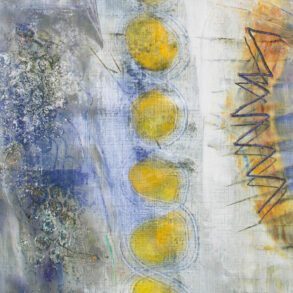Chemistry and the social sciences belong together. Reality emerges from the combination of different perspectives.
In the third natural science course that Rudolf Steiner held in 1921 on the subject of the relationship of the various scientific fields to astronomy,1 he encouraged people to discuss scientific fields that were traditionally separated from one another. The limited perspective of specialist scientists, who only understand their own field, remains on the surface of the world and does not permit penetration into reality with their knowledge. As a first example, he points to the merging of astronomy and embryology in order to connect astronomy, which leads outwardly to the insubstantial, to the human being. Chemistry should also be brought closer to the human being. If you get involved in chemistry, it actually leads you to other disciplines, because a chemical substance always points beyond itself. It only becomes a “chemical” substance when we consider the context in which it stands, i.e., when we ask ourselves how the substance came into being and what it can become.
Bridge to the Whole
The rare earths are extremely hidden by nature. They are contained invisibly in many rocks and soils and seemingly unrelated to life processes and humans. It was only through human research over a period of more than 100 years, particularly in the 19th century, that they were gradually brought to light. They are only brought into existence as isolated substances with specific properties by humans. Since the 1970s, rare earths have made possible technologies that have increasingly shaped our daily lives, particularly information technology in all its facets and technologies for generating renewable energies. The social consequences associated with this are part of the picture. And on the other hand, the extraction of these substances has a massive impact on the environment. All these aspects must be taken into account. In order to create a complete picture of these substances, a bridge must therefore be built from mineralogy and geology via chemistry and technology to the biological and social sciences.
Internal Connection
However, in order to fathom the inner connection between the natural basis (existence of rare earths in the mineral kingdom as hidden substances) and the possibilities and challenges that modern technologies pose to our consciousness, it will also be necessary to broaden the perspective of the humanities. By looking at the phenomena, the specialist scientists can come together and thus align to the ideal formulated by Rudolf Steiner that phenomenology “is the ideal of scientific endeavor that is present in anthroposophy.”2 “What is meant here by anthroposophical spiritual science—I must emphasize this again and again—is not dilettantish activity. It is research that carries the pure observation of phenomena from the natural sciences into the spiritual and thereby finds precisely the reconciliation that the best souls long for today: the reconciliation of outer life with inner life, the reconciliation of science and art, the reconciliation of science and religious feeling.”3
Event
The Natural Sciences Section’s autumn conference, “Diversity Strengthens Identity” will take place in Dornach from October 10th to 13th. The working group led by Martin Errenst, “Rare Earths—Hidden Earths,” will look at these substances, which are often mentioned but little known.
More: Natural Science Section, Evolving Science 2024
Translation Laura Liska
Image Neodymium oxide. It is extracted from ore and is mainly found in China and Australia. It is used for magnetic resonance tomographs, micromotors and hard discs, among other things. CC BY-SA 4.0.
Footnotes
- Rudolf Steiner, Interdisciplinary Astronomy: Third Scientific Course (CW 323), Steinerbooks 2020.
- Rudolf Steiner, “Proben für die Beziehung der Geisteswissenschaft zu den einzelnen Fachwissenschaften” [Examples of the relationship between spiritual science and scientific specialties.] January 15, 1921, in GA 73a.
- ibid.









